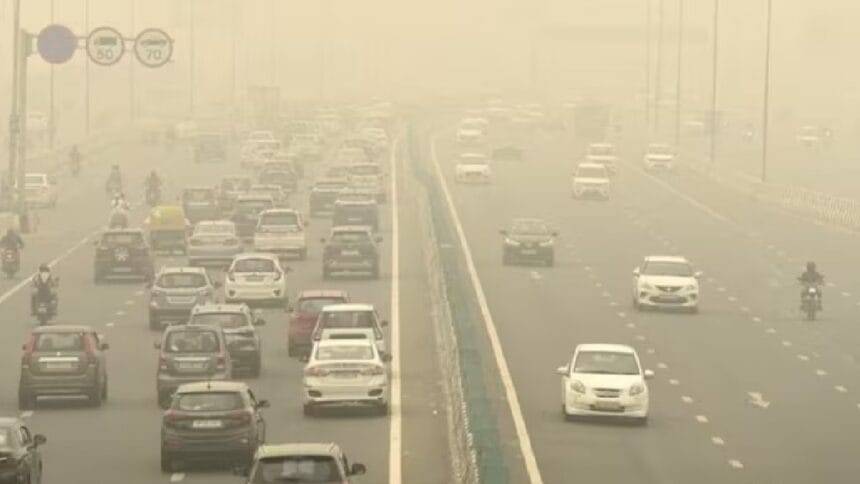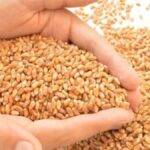Main Points In Hindi (मुख्य बातें – हिंदी में)
-
पराली जलाने में कमी: इस मौसम में पराली जलाने के मामलों में 75 प्रतिशत से अधिक की कमी आई है, जिसके कारण दिल्ली-एनसीआर की वायु प्रदूषण में पराली के धुंए का योगदान अब 5 प्रतिशत से कम हो गया है।
-
दिल्ली की वायु गुणवत्ता: फिर भी, दिल्ली का वायु गुणवत्ता सूचकांक (AQI) शनिवार सुबह 8 बजे 351 पर पहुंच गया, जो प्रदूषण के गंभीर स्तर को दर्शाता है और नागरिकों तथा अधिकारियों के बीच चिंता बढ़ा रहा है।
-
दिल्ली का आंतरिक प्रदूषण: रिपोर्ट्स के अनुसार, दिल्ली के कुल प्रदूषण में 25 प्रतिशत से अधिक योगदान शहर में उत्पन्न प्रदूषकों का है, जैसे कि वाहन से निकलने वाला धुंआ, जो वायु गुणवत्ता को प्रभावित करता है।
-
जलवायु परिस्थितियों का प्रभाव: मौसम की स्थिति भी दिल्ली की वायु गुणवत्ता को प्रभावित कर रही है। आगामी दिनों में धीमी हवा की गति के कारण प्रदूषण का स्तर कम होने की संभावना कम है।
- राष्ट्रीय ग्रीन ट्रिब्यूनल की रिपोर्ट: राष्ट्रीय ग्रीन ट्रिब्यूनल के अनुसार, पंजाब में पराली जलाने की घटनाओं में 70 प्रतिशत की कमी आई है, और यह राज्य प्रदूषण के मुद्दे पर नियमित रिपोर्ट मांगा करता है।
Main Points In English(मुख्य बातें – अंग्रेज़ी में)
Here are the main points derived from the provided text:
-
Significant Reduction in Stubble Burning: There has been a reduction of over 75% in stubble burning cases this season, with reports indicating that the contribution of stubble burning to Delhi’s overall air pollution has dropped to less than 5%.
-
Persistently Poor Air Quality in Delhi: Despite the decrease in stubble burning, the Air Quality Index (AQI) for Delhi remains concerning, reaching 351 on Saturday morning, indicating hazardous pollution levels that stay a major issue for residents and officials.
-
Local Pollution Sources Predominant: The primary causes of poor air quality in Delhi are local pollutants, particularly from vehicle exhaust, which accounts for over 25% of the total pollution. Weather conditions, such as low wind speeds, also contribute to the stagnation of pollutants in the atmosphere.
-
Expected Pollution Trends: The Meteorological Department predicts continued pollution through Monday due to low wind speeds and unfavorable mixing height and ventilation index, which will keep pollutants at ground level.
- National Green Tribunal Report: The National Green Tribunal reported a significant decrease (70%) in stubble burning incidents in Punjab, citing effective measures to control the issue, aligning with regional efforts to improve air quality in the Delhi NCR area.


Complete News In Hindi(पूरी खबर – हिंदी में)
इस मौसम में पराली जलाने के मामलों में 75 प्रतिशत से अधिक की कमी आई है। जबकि, दिल्ली एनसीआर में वायु प्रदूषण में पराली के धुएं का योगदान 5 प्रतिशत से अधिक हो गया है। इसके बावजूद, शनिवार सुबह 8 बजे दिल्ली का एयर क्वालिटी इंडेक्स (AQI) 351 पर पहुंच गया, जो वायु गुणवत्ता में काफी गिरावट को दर्शाता है। यह खतरनाक प्रदूषण का स्तर शहर के लिए एक गंभीर समस्या बना हुआ है। इसने निवासियों और अधिकारियों के बीच चिंता बढ़ा दी है।
इस मौसम में, पराली जलाने में कमी होने के बावजूद, जिसे आमतौर पर प्रदूषण का मुख्य स्रोत माना जाता है, दिल्ली की वायु गुणवत्ता बहुत खराब है। शनिवार सुबह फिर से दिल्ली का AQI 350 के पार चला गया, जो गंभीर स्थिति को इंगित करता है। शनिवार सुबह 8 बजे दिल्ली का 24 घंटे का औसत AQI 351 दर्ज किया गया, जो स्पष्ट रूप से प्रदूषण के स्तर को चिंताजनक दिखाता है।
दिल्ली में प्रदूषण में पराली का न्यूनतम हिस्सा
पुणे स्थित भारतीय उष्मीय मौसम विज्ञान संस्थान के अनुसार, अब दिल्ली के प्रदूषण में पराली जलाने का योगदान 5 प्रतिशत से कम हो गया है। इसके साथ, भारतीय कृषि अनुसंधान संस्थान के आंकड़ों के अनुसार, पंजाब और हरियाणा में पराली जलाने की घटनाएं सबसे कम स्तर पर पहुँच गई हैं।
दिल्ली स्वयं बुरी हवा के लिए जिम्मेदार
सवाल उठता है कि अगर पराली जलाना मुख्य कारण नहीं है, तो दिल्ली की हवा अब भी साफ क्यों नहीं है? इसका उत्तर शहर के भीतर ही है और कई कारक इसके लिए जिम्मेदार हैं। दिल्ली में उत्पन्न होने वाले प्रदूषक, विशेष रूप से वाहन के धुएं, दिल्ली के कुल प्रदूषण का 25 प्रतिशत से अधिक योगदान करते हैं। इसके अलावा, मौसम की स्थिति भी अनुकूल नहीं है। पिछले कुछ दिनों में हवा की गति थोड़ी बढ़ गई थी, जिससे वायु गुणवत्ता में हल्की सुधार हुआ।
सोमवार को प्रदूषण कम होने की उम्मीद
मौसम विज्ञान विभाग का अनुमान है कि शनिवार से सोमवार तक हवा की गति धीमी रहेगी, जिससे प्रदूषण के कम होने की संभावना भी कम है। इसके अलावा, मिक्सिंग हाईट और वेंटिलेशन इंडेक्स जैसे दो प्रमुख कारक भी काफी कम रहने की उम्मीद है, जिससे प्रदूषण जमीन के स्तर पर ही बने रहने की संभावना है।
NGT ने कहा 70 प्रतिशत मामलों में कमी
राष्ट्रीय हरित अधिकरण की हालिया रिपोर्ट के अनुसार, पंजाब में पराली जलाने की घटनाएं 70 प्रतिशत कम हुई हैं। NGT ने पहले NCR में पराली जलाने के कारण वायु प्रदूषण के मुद्दे पर राज्य प्राधिकरणों से नियमित रिपोर्ट मांगी थी। कृषि और किसान कल्याण विभाग के निदेशक द्वारा 26 नवंबर को प्रस्तुत रिपोर्ट में कहा गया कि पंजाब के प्रयासों के कारण 25 नवंबर 2023 को 36,551 घटनाओं की संख्या घटकर 25 नवंबर 2024 तक 10,479 पर पहुंच जाएगी। जिससे 70 प्रतिशत की कमी आएगी।
इसे भी पढ़ें –
Complete News In English(पूरी खबर – अंग्रेज़ी में)
This season, there has been a reduction of more than 75 percent in the cases of stubble burning. Whereas, the share of stubble smoke in the air pollution of Delhi NCR has increased to more than 5 percent. Nevertheless, the Air Quality Index (AQI) in Delhi reached 351 at 8 am on Saturday, showing a significant decline in air quality. This dangerous level of pollution remains a big issue for the city. This has increased concern among residents and officials.
This season, despite reduction in stubble burning, traditionally considered the primary source of pollution, Delhi’s air quality remains poor. The Air Quality Index (AQI) once again crossed 350 in Delhi on Saturday morning, which indicates a serious situation. Delhi’s 24-hour average AQI was recorded at 351 at 8 am, which clearly shows that the pollution level is still worrying.
The least share of stubble in Delhi’s pollution is
According to Pune-based Indian Institute of Tropical Meteorology, the contribution of stubble burning to Delhi’s pollution has now reduced to less than 5 percent. Along with this, data from the Indian Agricultural Research Institute shows that the incidents of stubble burning in Punjab and Haryana have reached the lowest level.
Delhi itself responsible for bad air
The question arises that if stubble burning is not the main culprit, then why is Delhi’s air still not clean? The answer lies within the city itself and many factors are responsible for it. Pollutants produced within Delhi, especially vehicle exhaust, contribute more than 25% of Delhi’s total pollution. Apart from this, the weather conditions are also not favourable. The wind speed had increased slightly in the last few days, due to which the air quality had improved slightly.
Pollution expected to decrease on Monday
The Meteorological Department estimates that the wind speed will be slow from Saturday to Monday, due to which the possibility of pollution reducing is also less. Apart from this, two major factors, mixing height and ventilation index, are also expected to be quite low, due to which the pollution will remain at ground level instead of rising into the atmosphere.
NGT said 70 percent cases decreased
According to the recent report of the National Green Tribunal, the incidents of stubble burning in Punjab have reduced by 70 percent. The NGT had earlier sought regular reports from the state authorities on the issue of air pollution in NCR due to stubble burning. A report was filed on 26 November by the Director of Agriculture and Farmers Welfare Department, in which it was said that as a result of the efforts of the State of Punjab, the number of incidents of paddy stubble burning will reduce from 36,551 on 25 November 2023 to 10479 on 25 November 2024. Which is a reduction of 70 percent.








